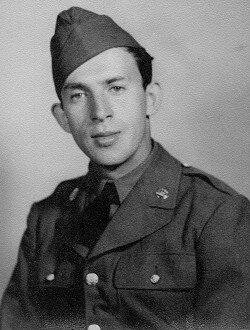Holtzer-Cabot Electric Company
In 1970, when the Boston Housing Authority converted the factory building at 125 Amory Street for senior citizen housing, it marked the end of the long history of one more manufacturing concern in Jamaica Plain. The building is now known as the Amory Street Apartments, but for fifty-five years it was the home of the Holtzer-Cabot Electric Company.
Industrial concerns are sometimes mysterious to their surrounding neighborhood. They usually do not sell any goods in the local area and display no products behind glass windows. But Holtzer-Cabot was a very well known company in its field, especially during its early years. It was an innovative company that produced both electrical communications devices and electric motors.
The Signal Department made communication apparatus such as fire alarm systems, watchman clocks, and telephones. The Motor Department produced speed reducers and small motors, usually less than one horsepower, for special uses. Electric coffee mills, envelope openers, and oil burners often used Holtzer-Cabot electric motors. This expertise in small motors, transformers and communication equipment evolved from the founding of the company.
Holtzer-Cabot Electric Company was started in 1875 in Brookline as the Holtzer Co. Charles W. Holtzer began the company to make simple electrical devices like doorbells, burglar alarms and electrical lighters for illuminating gas. By 1880, he was also operating the first telephone exchange outside Boston with one toll line to Boston and fourteen local subscribers. Since the telephone had been invented only in 1876, we can appreciate how progressive this commercial enterprise must have been.
Between 1880 and 1888, the firm was known as Seth W. Fuller & Holtzer, and then Fuller, Holtzer & Company when George E. Cabot joined the business. In 1889, Mr. Fuller left the company and the enterprise became Holtzer & Cabot and formally incorporated as Holtzer-Cabot Electric Company.
In 1891, the company built an electric carriage able to carry two people for Fiske Warren of Boston. This was one of the early automobiles in America, and a very early electric car. At this time, inventors were using steam, electricity or internal combustion to power the horseless carriages. This car was initially built for four passengers, but additional power was needed and more batteries were added in the back seat.
Although William Morrison in Des Moines, Philip W. Pratt of Boston, and John A. Barrett in Philadelphia had built earlier electric autos, this “Holtzer-Cabot” has been called the first successful electric vehicle built in the USA. It was one of the first to feature a steering wheel as it is used now; and it was manufactured as a commercial venture for a client, not as a demonstration vehicle for an inventor.
Mr. Warren scared everyone when he drove the car on the roads around his country house in Waltham, but it must have been successful because he ordered anther one built by Holtzer-Cabot in 1893. This one seated eight people, weighed 5100 pounds and could attain the speed of sixteen miles per hour. It seems to be the last electric car the company made.
The Company greatly expanded its telephone work from 1890 to 1915 and achieved success with the useful invention of noiseless generators for central telephone exchanges and other innovations. By World War I, their telephone apparatus was in telephone systems around the world and aboard ships and submarines of the US Navy. In 1912, a special Holtzer-Cabot generator allowed the first radio communication between an airplane and land. Mr. Holtzer, the founder and Chairman of the Board guided the creativity and expertise for these advances.
Reference letter given to Edward Feingold in 1945
Charles William Holtzer had been born in Karlsruhe, Germany in 1848. He came to New York at eighteen years old, and six months later was working at E.S.Ritchie & Sons, Brookline. He started the electrical firm of Holtzer & Newell in 1874, then proceeded on his own in 1875 in a small building in Harvard Square, Brookline. The company expanded quickly, moving to Boylston Street in 1880 and then buying property on Station Street opposite the railroad station in 1885.
This building (still standing) was remodeled, added to, expanded, and rebuilt until 1915, when Holtzer-Cabot’s new building was ready at 125 Amory Street, Jamaica Plain. He had chosen the area for its excellent transportation lines along Columbus Avenue, Washington Street, and the New Haven Railroad (now the Southwest Corridor). The area had abundant skilled help, and was in the heart of the Jamaica Plain German community.
The plant was six stories high, had 150,000 square feet of floor space and had room for expansion of four acres. Here Mr. Holtzer indulged in the benevolent management of his employees, with a Mutual Benefit Association, Savings Club, Shop and Management Committees and numerous extra-curricular activities. Sports teams of all sorts were well known in the city, and the daily band concerts at the Holtzer-Cabot bandstand every noon are still fondly remembered.
Mr. Holtzer died in 1927, and the company expanded during World War II. After ninety-seven years, the company closed. Its remaining lines were sold to Eastern Air Products in Dover, New Hampshire, which still carries the Holtzer-Cabot trademarks. The Boston Housing Authority bought the land and building for its renovation and reuse as housing. The building remains in our neighborhood, but nothing of the Holtzer-Cabot Electric Company has survived here - excepting perhaps its spirit.
Sources:
Holtzer-Cabot Electric Co., Fifty Years 1875-1925, Boston, 1925; Automobile Quarterly, The American Car since 1775, New York, 1971; The Brookline Chronicle, April 7, 1925; Boston City Directory, 1905-1976. Photograph of battery powered car, early 1900’s with Mrs. Charles C. Gates and friend, similar to electric vehicles produced by Holtzer-Cabot Electric Company. Photograph by Harry M. Rhoads courtesy of Western History/Genealogy Department, Denver Public Library.
Edward Feingold (who got the letter above). Image courtesy of his son, Michael Feingold
Copyright © 1995-2003 Michael Reiskind



